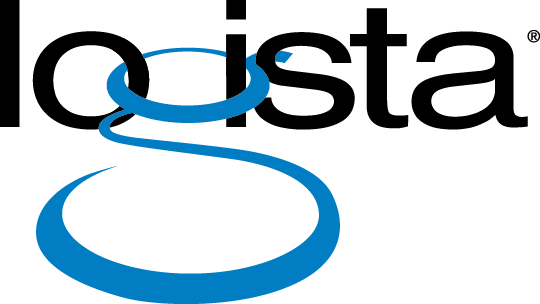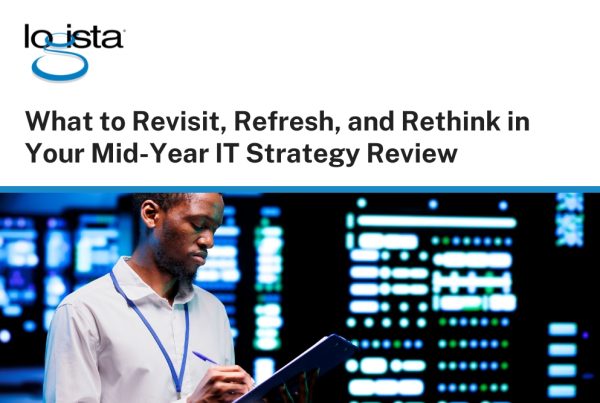Technology should make your business run faster, smoother, and be more productive. But when it breaks down, it can put a damper on everything from workflows to customer service. Everyday issues like slow-loading applications, dropped connections and unresponsive printers don’t just waste time. They wear down your team, inflate costs, and ripple through your operations in the form of missed deadlines and unhappy customers.

Most IT issues don’t just show up out of nowhere. They’re signals that something in your environment needs to be re-evaluated or updated. Addressing them early can prevent bigger headaches later. Below, we’ll walk through 10 common tech problems that may be quietly slowing your business down, along with ways to resolve them.
1. Outdated Hardware
Why it’s slowing you down:
Aging computers, servers, and printers are among the most visible (and most frustrating) productivity killers. They run slower, crash more often, and are less likely to support the latest tools or security features. Worse, they’re prone to failure when you need them most.
How to fix it:
Schedule regular hardware audits, don’t wait until things break. Many businesses benefit from leasing hardware or using hardware-as-a-service (HaaS) plans that allow for predictable costs and regular upgrades. That way, your team always has equipment that keeps up with their pace.

2. Unsupported or Legacy Software
Why it’s slowing you down:
Old software doesn’t just lack features. It’s a ticking time bomb when it comes to security and compatibility. Unsupported platforms don’t receive patches, leaving you vulnerable to cyber threats. And even basic tasks like sharing files or syncing data can feel like a hassle.
How to fix it:
Make a list of all software currently in use, and identify which ones are no longer supported or have more modern alternatives. Prioritize updates or migrations for mission-critical tools first. Cloud-based platforms are often easier to update and scale, plus, they’re built for modern collaboration.
3. Network Bottlenecks
Why it’s slowing you down:
Your internet connection is the backbone of everything from email to cloud backups to video conferencing. When it’s slow or unreliable, your team can’t do their jobs. Especially in hybrid environments, poor connectivity turns into a constant source of disruption.
How to fix it:
Don’t just rely on speed tests. Have your network evaluated for bandwidth allocation, switch capacity, and wireless coverage. Upgrading routers, adding access points, or segmenting traffic (like separating guest Wi-Fi) can help. For larger or multi-site teams, consider SD-WAN to optimize traffic routing.
4. Lack of IT Strategy
Why it’s slowing you down:
When IT decisions are made reactively like fixing one thing here, buying a new tool there, it’s hard to build momentum. You end up with a patchwork of tools that don’t talk to each other, don’t support your goals, and are harder to manage.
How to fix it:
A strategic IT roadmap doesn’t have to be complicated. It just has to be aligned with where your business is going. Working with a virtual CIO (vCIO) or IT consultant can help you assess what you have, what you need, and how to scale your technology in a way that’s best for your business.
5. Poor Cybersecurity Hygiene
Why it’s slowing you down:
It only takes one click on a malicious link or one missed software patch to trigger a cybersecurity incident that grinds your business to a halt. From ransomware lockouts to email fraud, these threats can cause data loss, downtime, and serious financial damage.
How to fix it:
Security isn’t just for big companies. Implement multifactor authentication (MFA), keep devices patched, and ensure you have a modern antivirus or endpoint detection tool. And don’t forget the human element: regular security awareness training goes a long way. For peace of mind, consider Managed Security Services.

6. Software Sprawl
Why it’s slowing you down:
Over the years, your team may have adopted tool after tool to solve specific problems. But now there’s overlap, confusion, and too many logins. Employees bounce between five different platforms just to complete a task, and no one knows which tool to use for what.
How to fix it:
Start with a software audit. Identify which apps are truly necessary and which ones duplicate functions. Then look for ways to consolidate like moving to a unified communication suite or a single project management platform. Reducing tool sprawl saves money and mental bandwidth.
7. Lack of Automation
Why it’s slowing you down:
Manual processes like entering invoices, updating spreadsheets, or assigning support tickets drain hours of staff time every week and increase the chance of human error. In fast-moving businesses, those delays create bottlenecks and backlogs.
How to fix it:
Look at tasks your team repeats daily or weekly. Many tools today (especially in accounting, HR, and customer service) offer built-in automation features. For broader needs, platforms like Power Automate or Zapier can connect your existing apps with minimal effort.
8. Inadequate IT Support
Why it’s slowing you down:
When employees have to wait hours or days for IT help, they can’t stay productive. Worse, some may avoid reporting issues altogether, letting problems simmer. If your internal IT team is overwhelmed, things fall through the cracks.
How to fix it:
Evaluate how quickly IT issues are currently resolved. If turnaround times are slow or inconsistent, look into outsourced help desk solutions. Many Managed IT providers offer 24/7 support with guaranteed response times. That means fewer delays and a better experience for your team.
9. No Backup or Disaster Recovery Plan
Why it’s slowing you down:
Imagine losing client files, payroll data, or your entire inventory system due to a power outage, flood, or ransomware attack. Without proper backup and recovery, your business could be offline for days—or permanently lose data.
How to fix it:
A reliable backup and disaster recovery (BDR) plan includes automated daily backups, offsite cloud storage, and a way to quickly restore systems if something goes wrong. Make sure your backup is tested regularly.

10. Remote Work Gaps
Why it’s slowing you down:
If remote or hybrid workers can’t access the tools or files they need, or if the experience is unpredictable, they’ll lose time, miss deadlines, or be forced to come into the office unnecessarily. Security can also suffer when employees use personal devices or unsecured networks.
How to fix it:
Standardize on cloud-based platforms that support remote collaboration. Make sure all employees use secure access methods like VPNs or virtual desktops. Invest in training so they know how to work securely and efficiently from anywhere.
IT Problems Are Business Problems Too
Every issue on this list chips away at your team’s productivity, your customer experience, and your bottom line. But the good news? They’re fixable. With a clear plan you can turn IT from a source of frustration into a strategic asset that helps your business grow.
If these challenges sound familiar, you don’t have to solve them alone. A Managed IT Services provider can help you identify gaps, prioritize fixes, and build a technology strategy that supports your business goals, not slows them down.
About Logista Solutions
Logista Solutions is a nationally recognized leader in a broad range of technology management solutions. As one of the largest technology support providers in the U.S., Logista provides innovative and holistic solutions to help companies take control of their IT infrastructure and achieve better business outcomes. Popular services include Managed IT as a Service, VoIP and Unified Communications, Managed Print, Cloud Services and Asset Disposition.



